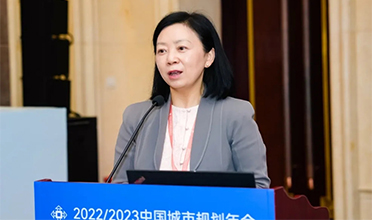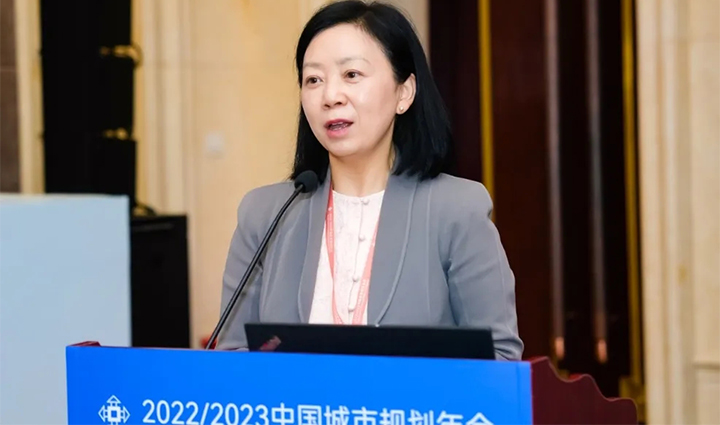



Shao Yong
Deputy Secretary-General of Historical and Cultural Cities Planning Branch of the Urban Planning Society of China
Professor, College of Architecture and Urban Planning, Tongji University
3.2 Overall protection and synergistic development of the Southern Guangdong ancient post road region
3.2.1 Difficulties faced by traditional villages in the region
Guangdong presents diverse content in different parts of Guangdong because of its geography, industry resources, immigrant culture, and other factors. Historically, these villages were located along the Southern Guangdong ancient post road area, just like modern constructions built alongside the modern railroad lines and highways. These villages were prosperous due to the stagecoach routes, and were outstanding representatives of the habitat-type heritage, and some of them have already become the World Heritage Sites. The towns and villages along the routes, which can be seen as the carriers of the value of the post routes, were developed in ancient times, but have declined in modern days due to the complete changes in transportation system. Data show that there are about 1,320 provincially poor villages within 5 kilometers on both sides of the ancient post routes in Southern Guangdong, accounting for 60% of the total number of villages in the province. As a result of economic decline, a series of problems have ensued in the villages in these areas: disrepair, gradual extinction of traditional non-heritage, village hollowing, and aging.
3.2.2 Conservation of Southern Guangdong ancient post roads
Since 2016, Guangdong has taken the lead in the country to carry out the protection and utilization of ancient routes, creating eight demonstration sections of the Southern Guangdong Ancient Post Routes; in 2017, the Master Plan for the Protection and Utilization of the Southern Guangdong Ancient Post Routes was compiled and completed. In 2018, more than 1,000 kilometers of the ancient routes, the remnants along the routes and the surrounding villages were surveyed and inspected to comprehensively promote the protection and revitalization of the ancient post routes. This includes the establishment of a comprehensive protection system that combines natural and humanistic environments, tangible and intangible resources. For example, the natural background, the heritage of the post route, the skeleton system of the post route, and the intangible culture have all been sorted out for overall protection and adaptive use. By the beginning of 2020, 18 key routes have been restored.
Guangdong Province has also implemented a set of top-down policies, as well as a large amount of capital, manpower and material inputs, adding different characteristics in the development path of ancient post routes, including sports, education, tourism, specialty industries, and the results are also very obvious. The protection and repair of local heritage has improved the physical space; the simultaneous construction and repair of public and infrastructural facilities alongside the post routes has upgraded the human environment. In addition, it also promotes the transformation of industries, realizes precise poverty alleviation, and integrates isolated villages and other tourism resources into the framework of the "Ancient Post Route" tourism. Now, 125 provincial poor villages along the key routes have been lifted out of poverty, and the disposable income of rural residents has been greatly improved. Throughout the process, a large number of talents have been brought in to promote the return of villagers to participate in the protection and construction of villages and to enhance the capacity for self-governance through the leadership of volunteers and the organization of special activities.
3.3 Overall conservation and synergistic development of Yunlong County
Yunlong County has a history of more than two thousand years of establishment and extremely rich natural and cultural resources distributed in the Lancang and Bijiang River valleys, it has three national cultural preservation area, two provincial cultural preservation, one national historical and cultural village, one provincial historical and cultural village, and seventeen Chinese traditional villages.
The Bijiang River Valley is a salt valley with artesian salt since ancient times. After discovering such special conditions, the local people used the technique of digging wells to mine up the salt. Later on, as the technology was upgraded, the technique of separating salt and fresh water, the brine and fresh water. The natural cultural heritage units and traditional villages scattered in the Riverside area were formed because of the digging salt wells.
The typical river valley section shows a U-shape, and there are often salt wells on the side of rivers, streams, and rivers, around which is the space for production and salt god beliefs; others are the part of villagers' life, with the gathering of stores and residential compounds; and further up is the space for beliefs such as the Confucian Temple, the Taoist Temple, and the Sanchong Temple, forming the spatial pattern of a typical salt well village.
The social structure of the traditional villages in the Bijiang River Valley in Yunlong County was basically based on the use of wells as a substitute for farming. Then the income from the salt selling was used to buy food from other farming villages. The shape of the villages also developed from the pattern of salt production, with salt villages producing salt, transporting salt and selling salt. Due to the importance that the state attaches to the salt industry, the state has been very strict in its management of the salt industry. Forming a salt culture community consisted of different stakeholders, including salt distribution, salt transportation, salt sales, and so on. Because of the salt, people from various regions would come here to trade, so some other cultural practices were gradually added based on the local Bai culture, such as Confucianism and Taoism, as well as a very special belief in the salt god. These villages have also developed tangible and intangible cultural heritages related to salt, such as Nuodeng ham, horse transport culture, etc., the Salt and Horse Road that connects villages to each other, and the 37 ancient bridges over the Bijiang River.
The research basically identified the locations of the ancient salt horse paths, which are distributed along the river and linked across high mountains. Although each salt well village was not big, in fact, it formed a kind of salt cultural landscape as a whole: salt valley, salt river, salt wells, salt villages, and salt customs. All of those were linked through the Salt Horse Ancient Road. The overall culture of this strung-together cluster of villages is more important than the preservation of individual villages. Therefore, we have to emphasize the wholeness and corridor of traditional villages. The overall historical value, scientific value, artistic value, as well as social and cultural value, are far greater than those of individual villages. Including the ecological value and economic value derived from it, it is also very important today.
4 Conclusion
We need to learn vernacular wisdom from traditional villages: inside traditional villages, we will see the management of people's needs, such as the building and construction of each house for the betterment of the interests; the system of canals and ponds that flow from door to door in front of each house. But in this process, the management of human needs is a prerequisite for the development of contemporary vernacular wisdom. So if we want to better manage human-land relations in modern days, we must look at how human beings can better manage the needs in the present. This is actually how to develop in a more sustainable way. In addition, Confucius also said that "the loss of etiquette should be sought in the field", and there is a lot of local wisdom in the traditional Chinese villages and culture, from which we can find many solutions and inspiration.
Source: <https://mp.weixin.qq.com/s/sU0bvg02NdB3jM9SlPi7YA>
Translator: Zhang Chenxi